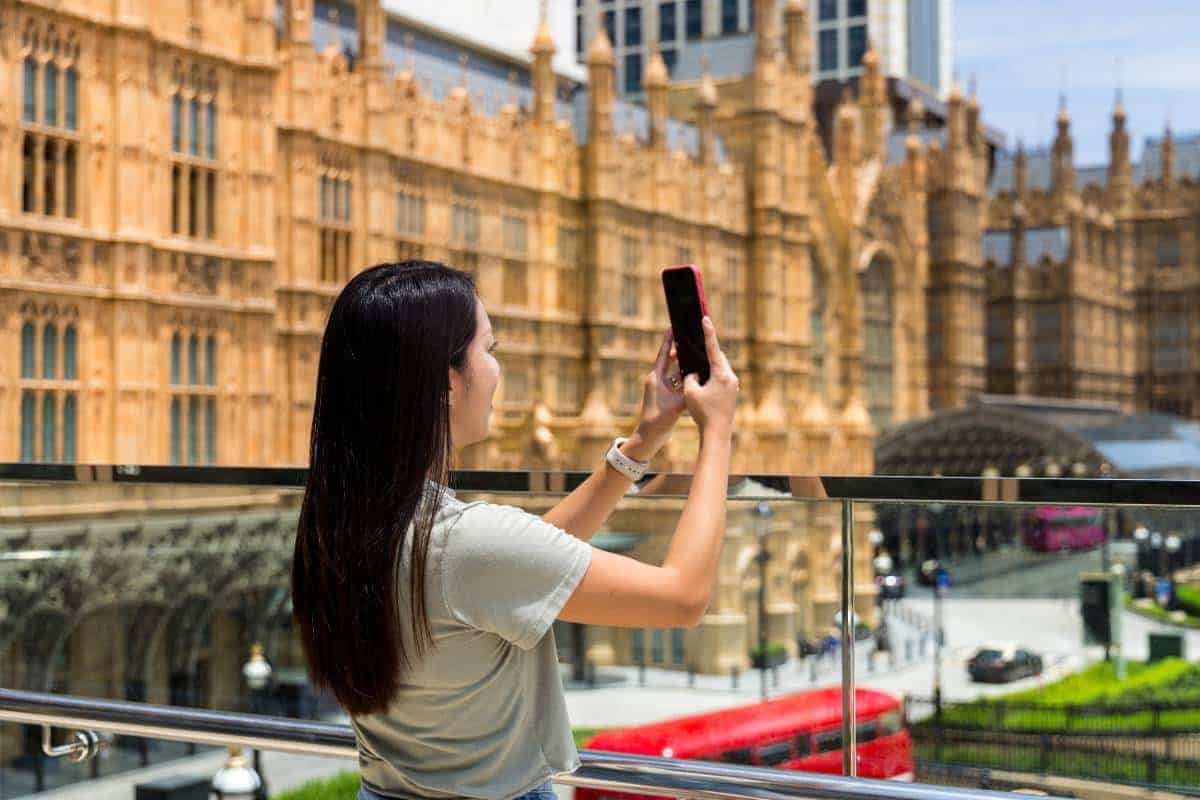While artificial intelligence (AI) in tourism and hospitality has been a trending topic over recent months, there’s another two-letter acronym that’s taken the travel industry by storm: AR, short for augmented reality. Augmented reality is a growing technology that overlays digital information and imagery onto a user’s view of the real world for increasingly immersive travel experiences.
Like AI technology, AR applications in travel have revolutionized how travelers explore destinations, providing real-time information that can be personalized to each user’s unique journey, enhancing engagement and convenience. Today, augmented reality in travel has even encouraged consumers to plan longer trips and add extra excursions. Take a look at how AR is impacting modern travel.
Practical Applications of Augmented Reality in Travel
It seems that anywhere you look in the travel and tourism sector, two two-letter technologies are shaping consumer experiences: AI and AR. As technologies like AI travel planners and smart assistants rise in popularity for the travel booking process, augmented reality travel technology has begun to reimagine traditional travel experiences. So, how is augmented reality used in travel?
1. AR Travel Guides and Navigation
In the context of travel technology, AR is often used to superimpose digital data over images of destination maps accessed via mobile devices. AR travel guides overlay historical information and activity recommendations on navigation apps. Likewise, AR travel technology can be used through smartphone cameras to provide real-time directions when travelers visit unfamiliar locations.
2. Cultural Immersion
One of the leading applications of AR in tourism has been immersive travel experiences. The use of AR-powered apps allows travelers to bring historical sites, landmarks, and museums to life with animated reconstructions and infographics, both when planning a trip and while onsite. Heightened cultural immersion can explain why 74% of travelers will plan longer trips when they use AR.
3. Interactive Hotel Experiences
Beyond interactive travel experiences that occur while sightseeing, hotel chains have also adopted AR applications to power more personalized travel experiences indoors. A new wave of hospitality and tourism innovation has seen a variety of AR-powered features in hotel rooms that provide guests with information about amenities and services, like onsite spas, even allowing contactless booking.

Why Are Savvy Travel Businesses Investing in AR Technologies?
Augmented reality in travel is on the rise, and it’s not slated to slow any time soon. Savvy travel and tourism businesses are increasingly investing in AR technology, largely due to the massive boost in consumer engagement. Immersive and interactive travel experiences captivate consumers — so much so that travelers who use AR to plan their trips ultimately spend up to $225 more per trip.
But that’s not all. AR also powers more personalized travel experiences, providing tailored recommendations based on a user’s preferences and behavior. Since 79% of U.S. travelers will add an excursion or similar add-on to their itinerary when using AR, brands that can customize travel experiences are not only capturing more of the wallet share but also retaining more users.
Speaking of retention, augmented reality travel technology is also making travel experiences more convenient for consumers, allowing for a more enjoyable vacation that brings travelers back for more. Tourism businesses are also benefiting from the educational value AR provides, seamlessly sharing in-depth cultural and historical information with travelers from around the world.
Challenges and Future Trends in AR Travel Integration
So, what is the future of augmented reality in tourism? Businesses can predict that AR applications in travel technology will evolve to include various language and translation services that make communication easier — and far more accessible — for international tourists and locals. Travelers can use AR applications to translate menus, street signs, and more with one touch of a button.
However, despite the bright future many anticipate for augmented reality travel technology, integrating AR applications does come with a few challenges. The biggest barrier has been technological limitations, both for businesses with legacy systems and for those in locations with weak network coverage. Similarly, data privacy concerns have hindered widespread AR adoption.
Integrate the Latest Travel Technologies with arrivia
As travel technology continues to evolve, one thing remains certain: the experts at arrivia are at the helm. With a suite of artificial intelligence features, like smart price monitoring and personalized itinerary suggestions, arrivia is revolutionizing travel booking and travel loyalty rewards for businesses worldwide.
Contact arrivia today to learn more about our leading travel technologies.



